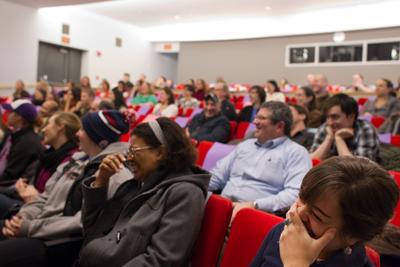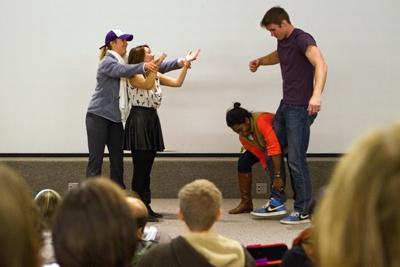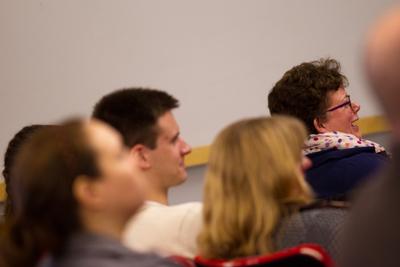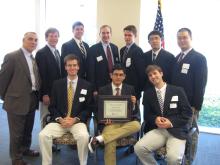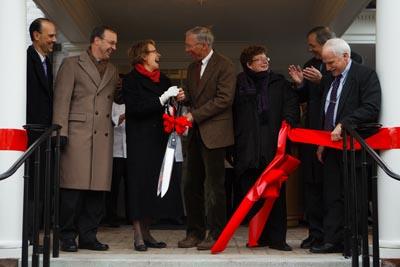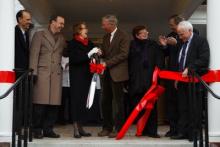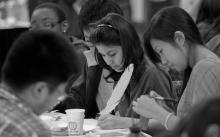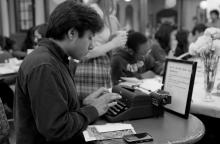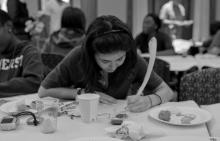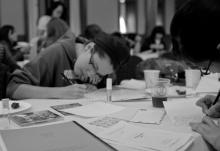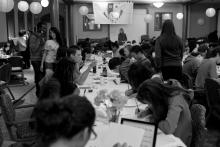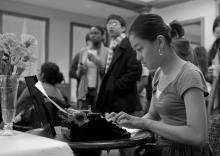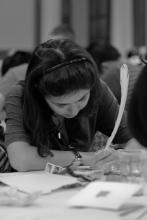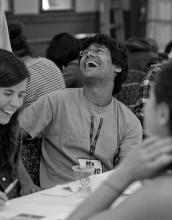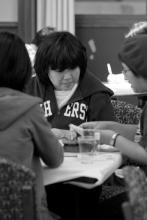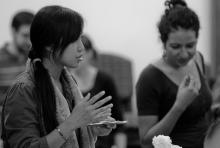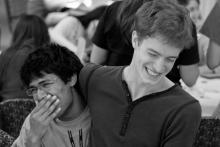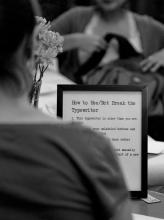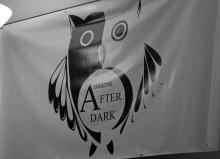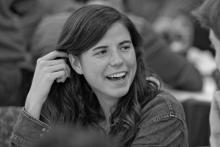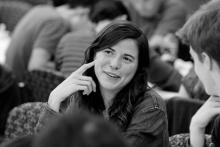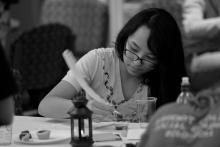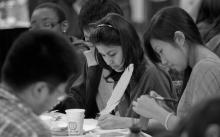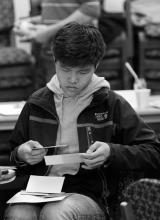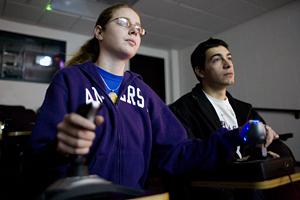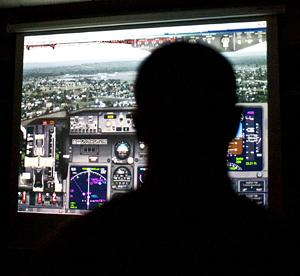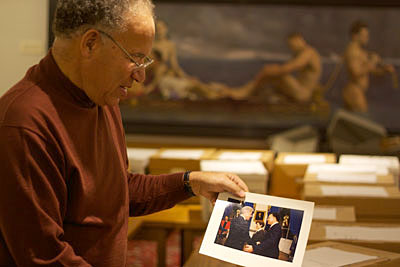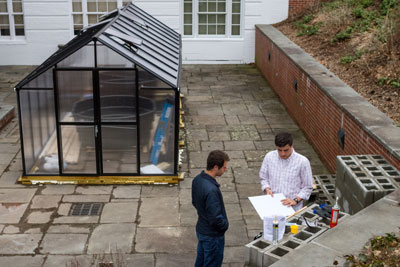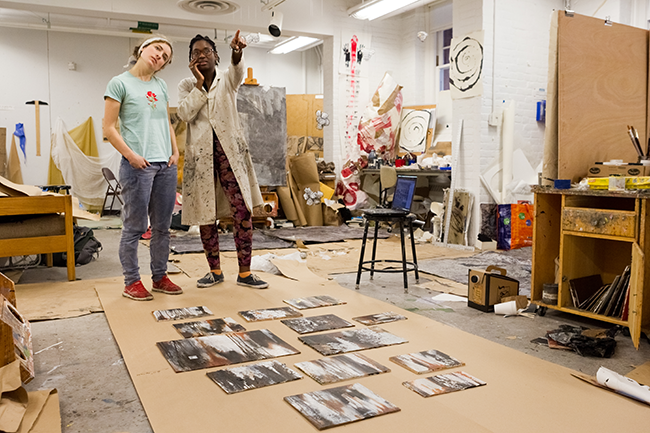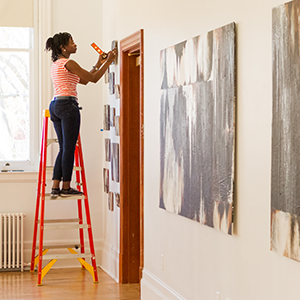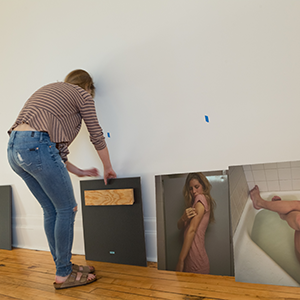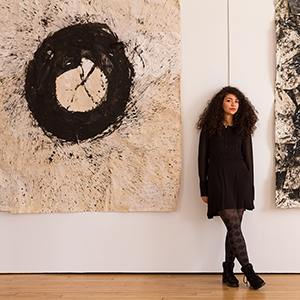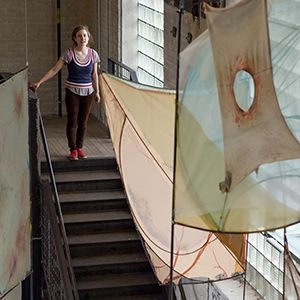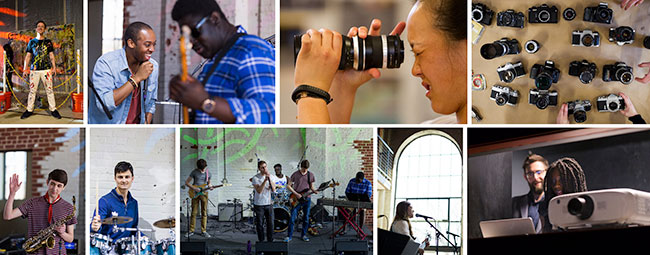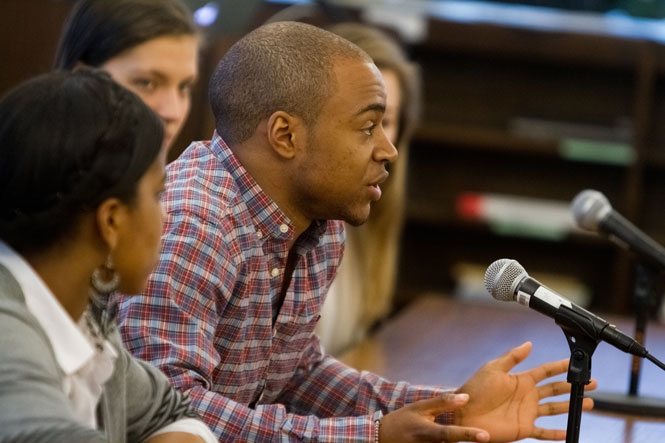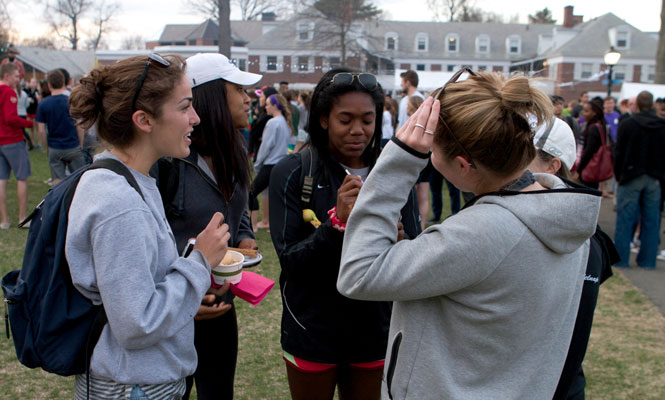Celebrating a Campaign for Core Amherst Values
By Peter Rooney
With music, lectures, a poet's portait unveiling and a campus-wide celebration, Amherst College thanked alumni, faculty, staff, students and their parents on Friday and Saturday for a successful fundraising campaign that faced fierce initial headwinds.
“We had a wonderful weekend that showcased our amazing faculty, staff, students, alumni and parents,” said Amherst President Biddy Martin on Saturday,kicking off an evening of food, drinks, music and games on the Main Quad (go here to view photos from the celebration).
[[{"type":"media","view_mode":"media_original","fid":"278544","attributes":{"alt":"","class":"media-image","desc":"campaign celebration photo","height":"406","nid":"513485","title":"","width":"640"}}]]
The campus community celebrates a successful campaign
“It’s important to celebrate what it is that people actually want to support, which is a residential liberal arts education of the sort Amherst offers,” Martin reflected earlier. “It’s about emphasizing the things that matter and bringing the community together and remind us why we’re all here.”
[[{"type":"media","view_mode":"media_original","fid":"278564","attributes":{"alt":"","class":"media-image","desc":"BigQuadCelebRedux_002.jpg","height":"1280","nid":"513627","title":"","width":"1920"}}]]
Making Connectiions, in this case dots: a recurring theme in the fundraising campaign
The campaign was launched in October 2008, the same month a global stock market plunge sparked a recession while trimming about 23 percent from the college's endowment value.
Just over $502 million and almost five years later, Amherst College President Biddy Martin said the campaign, which roared past its original goal of $425 million, was an extraordinary reflection of support for the campaign’s objectives -- maintaining the college’s need-blind financial aid policies, capitalizing upon its increasingly diverse student body and fostering faculty-student research opportunities.
“The campaign was not only launched during a challenging time but it succeeded during the worst downturn since the Great Depression,” Martin said. “The fact that this campaign was aimed at ensuring socioeconomic, racial and ethnic diversity at Amherst as well as affordability is certainly worth celebrating because it reflects so well upon those who helped make it a success.”
Martin also pointed out the high number of anonymous donations, totalling more than $138 million, including separate anonymous gifts of $100 million and $25 million, and the high proportion of unrestricted gifts, about 47 percent of the campaign total, as being noteworthy and unusual.
At Amherst, the campaign’s success was the responsibility of Chief Advancement Officer Megan Morey, who worked closely with her staff, trustees and a Campaign Executive Committee chaired by alumni and trustees Brian J. Conway '80, Hope E. Pascucci '90 and Jide J. Zeitlin '85.
The campaign, which was named “Lives of Consequence,” allowed the college to broaden access to Amherst, enhance the curriculum and the physical campus, and foster greater engagement between the college and the wider community, Morey said. Acknowledging the severity of the recession when the campaign was in full swing, organizers encouraged giving of all kinds, she noted.
“We encouraged and recognized alumni engagement as a form of giving,” she said. “Alumni and parents are a tremendous resource and we will continue to emphasize and support the opportunities created from alumni connecting with students, faculty and one another through academic, co-curricular, regional and volunteer programming.”
By the end of the campaign, 86 percent of alumni had engaged with the campaign in one way or another, one of the top levels of engagement for any college or university in the country, Morey said.
“I’ve been hard-pressed to come across somebody who didn’t at some point connect with the college in some way,” she said. “It’s incredible.”
Invitations to this weekend’s “You Did It!” celebration were sent out to all of the college’s 22,000 alumni, as well as to students, their parents, faculty and staff.
Several hundred were on hand for the weekend’s events, which included a reading and portrait dedication in Johnson Chapel featuring Richard Wilbur '42, two-time Pulitzer Prize for Poetry winner, former U.S. Poet Laureate, literary translator and, since 2008, the John Woodruff Simpson Lecturer at Amherst College, the same position held at the college by Robert Frost.
[[{"type":"media","view_mode":"media_original","fid":"278545","attributes":{"alt":"","class":"media-image","desc":"WILBUR PHOTO.JPG","height":"918","nid":"513486","title":,"width":"1407"}}]]
Richard Wilbur '42, reading poetry next to the newly unveiled portrait of him
At the unveiling of the painting by portraitist Sarah Belchetz-Swenson, which was made possible with the generous support of Axel Schupf ’57, President Martin noted Wilbur’s “ebullient and often surprising humor, and celebration of everyday things.”
Before reading a series of poems by his colleague Wilbur, Professor of English David Sofield recalled their “fierce doubles tennis partnership,” their five years of teaching together, the fact that Wilbur “has more poems by heart than anyone else in the world” and alluded to Wilbur’s experience during World War II, “following combat all the way from south central Italy to France, Germany and Austria.”
Then he read the poem Terza Rima, published in The New Yorker in 2008, more than 60 years after World War II had ended:
In this great form, as Dante proved in Hell,
There is no dreadful thing that can’t be said
In passing. Here, for instance, one could tell
How our jeep skidded sideways toward the dead
Enemy soldier with the staring eyes,
Bumping a little as it struck his head,
And then flew on, as if toward Paradise.
After the portrait was unveiled by Martin and Board of Trustees Chairman Cullen Murphy, Wilbur himself took the stage, to thank those who have supported him over the years. He then read a brief selection of poems, including one, “The House,” which he dedicated to his wife “Charlee,” Mary Charlotte Hayes Ward, who died in 2007. It also was published in The New Yorker and captivated the assembled audience:
Sometimes, on waking, she would close her eyes
For a last look at that white house she knew
In sleep alone, and held no title to,
And had not entered yet, for all her sighs.
What did she tell me of that house of hers?
White gatepost; terrace; fanlight of the door;
A widow’s walk above the bouldered shore;
Salt winds that ruffle the surrounding firs.
Is she now there, wherever there may be?
Only a foolish man would hope to find
That haven fashioned by her dreaming mind.
Night after night, my love, I put to sea.
This weekend’s program (see the full schedule here) also featured:
- A keynote address on Friday by Howard Gardner, an Amherst College Trustee and the John H. and Elisabeth A. Hobbs Professor of Cognition and Education at the Harvard Graduate School of Education. Howard spoke on “Education in the Liberal Arts and Sciences: Glancing Backward, Imagining Forward.”
- A “point-counterpoint” conversation on affirmative action between two Amherst alumni, Bert Rein '61, plaintiff's counsel in the Supreme Court Case Fisher v. University of Texas at Austin, and Paul Smith '76, whose three-decade Supreme Court practice includes a landmark victory in Lawrence v. Texas (moderated by Professor Martha Umphrey, professor of law, jurisprudence and social thought.
- Student-Faculty research presentations featuring three projects from across disciplines from Austin Sarat, William Nelson Cromwell Professor of Jurisprudence and Political Science, and Madeline Sprung-Keyser ‘13; Lisa Brooks, co-chair of the Five College Native American Indian Studies Certificate Program, and Danielle Trevino ‘14; and Anna Martini, professor of geology, and Robert Gaffey ’15.
